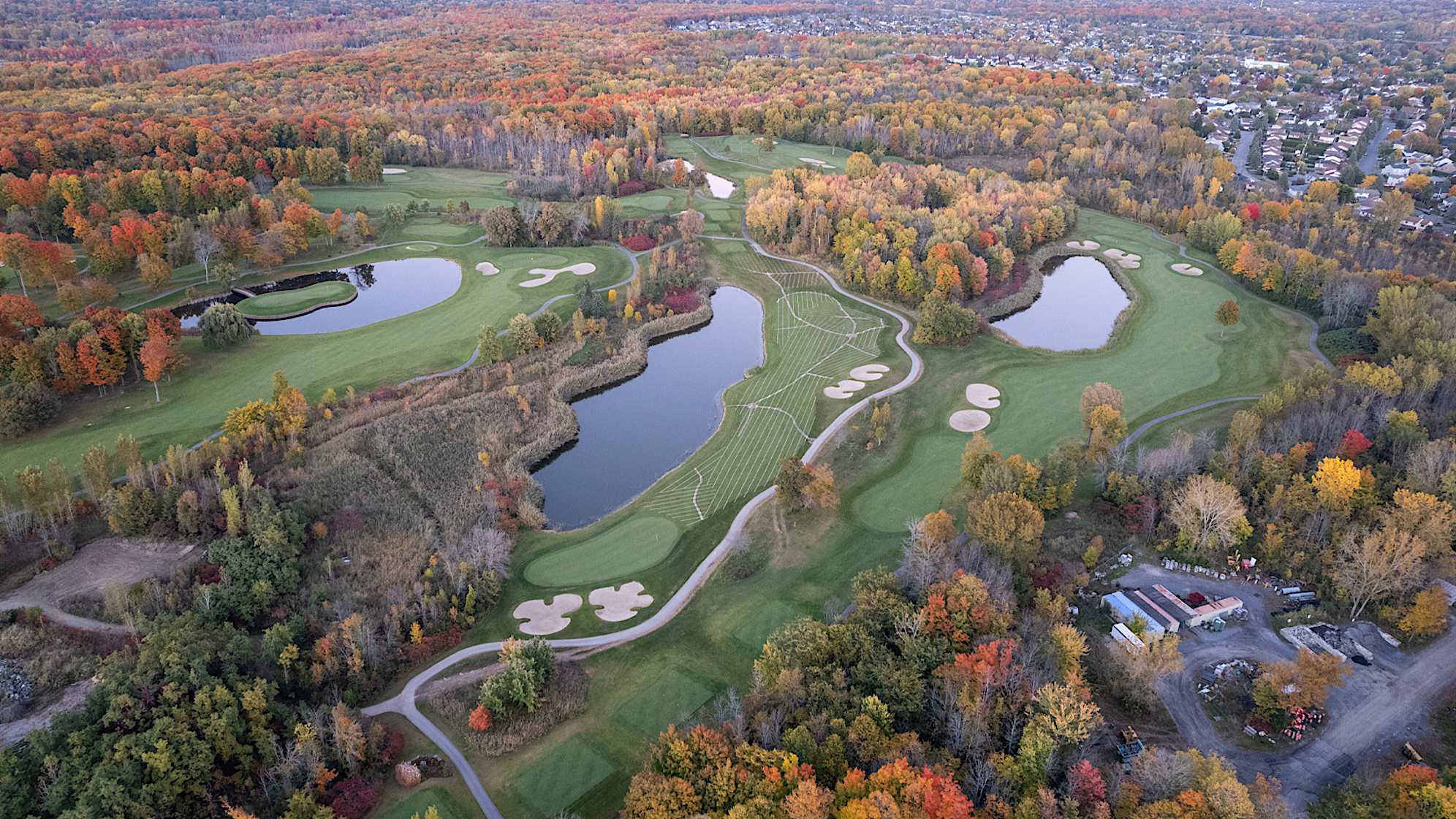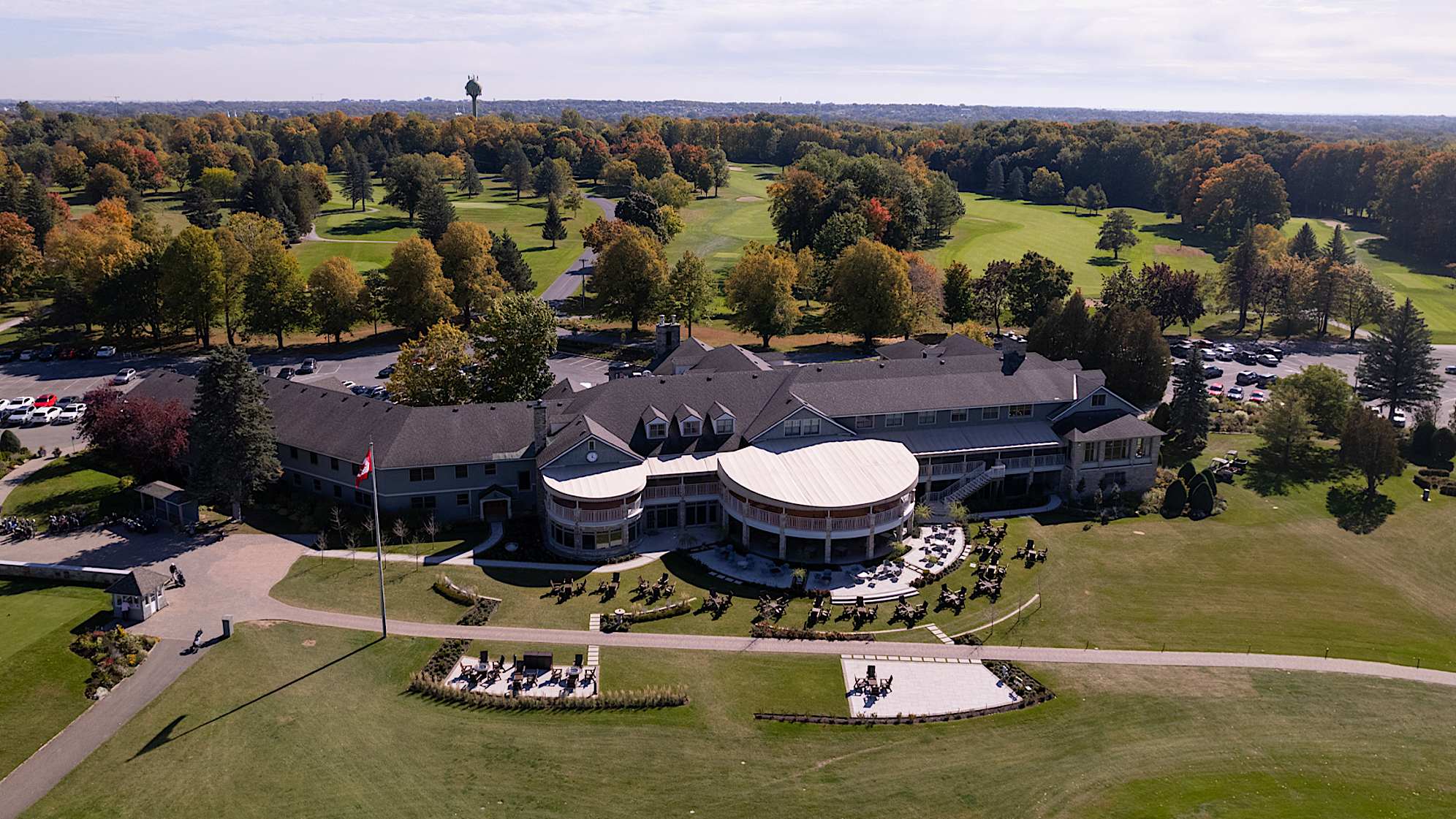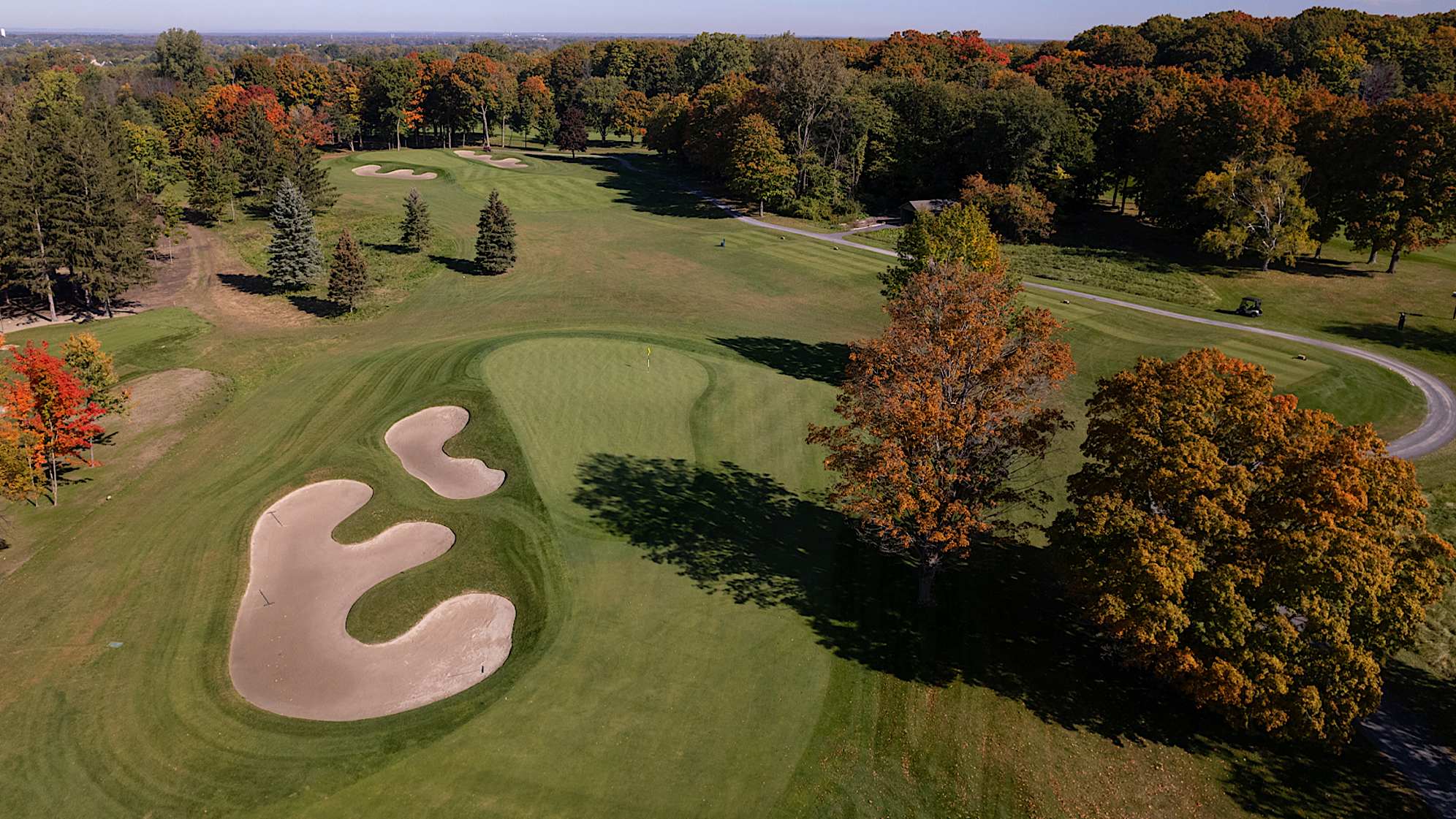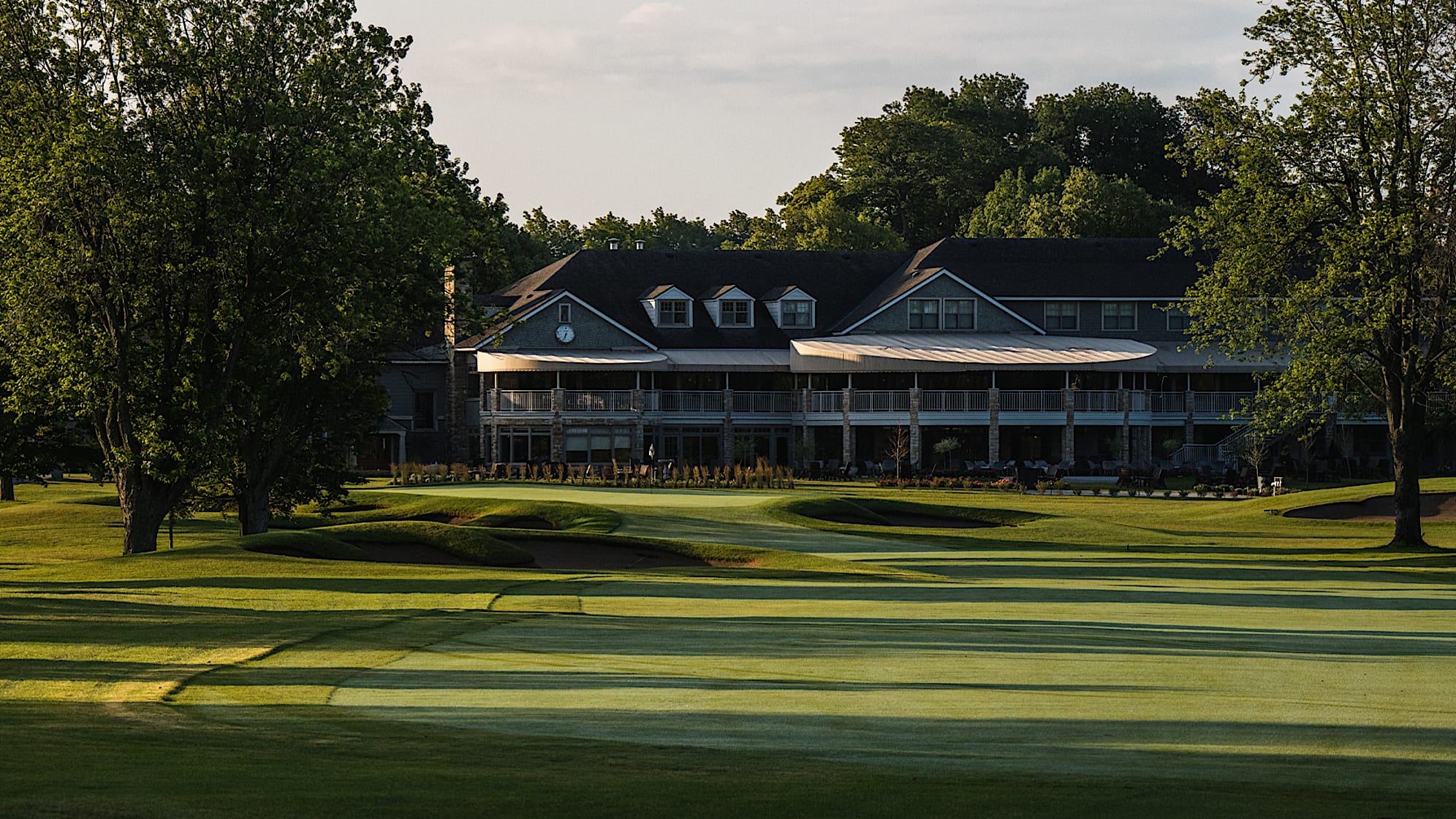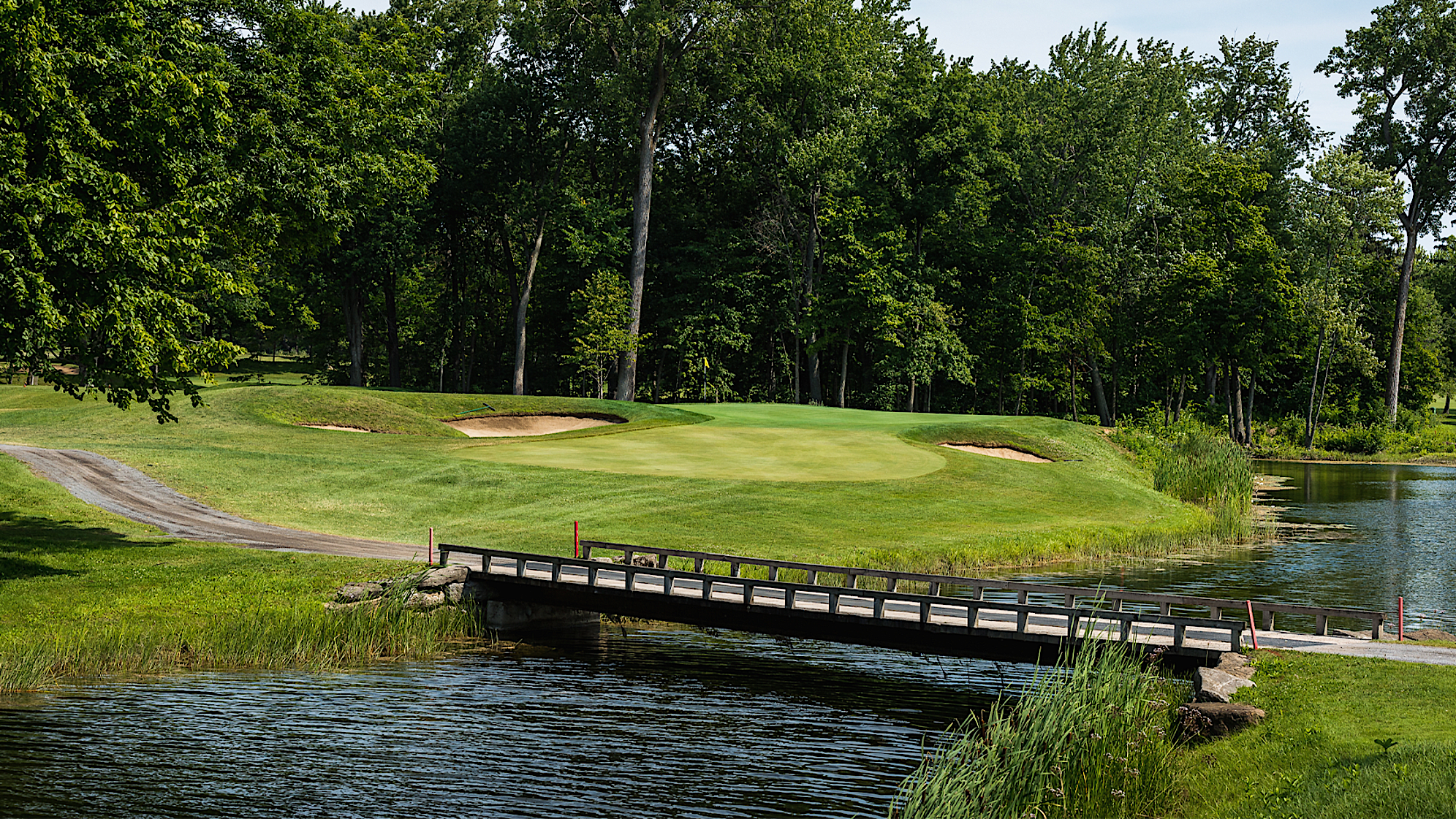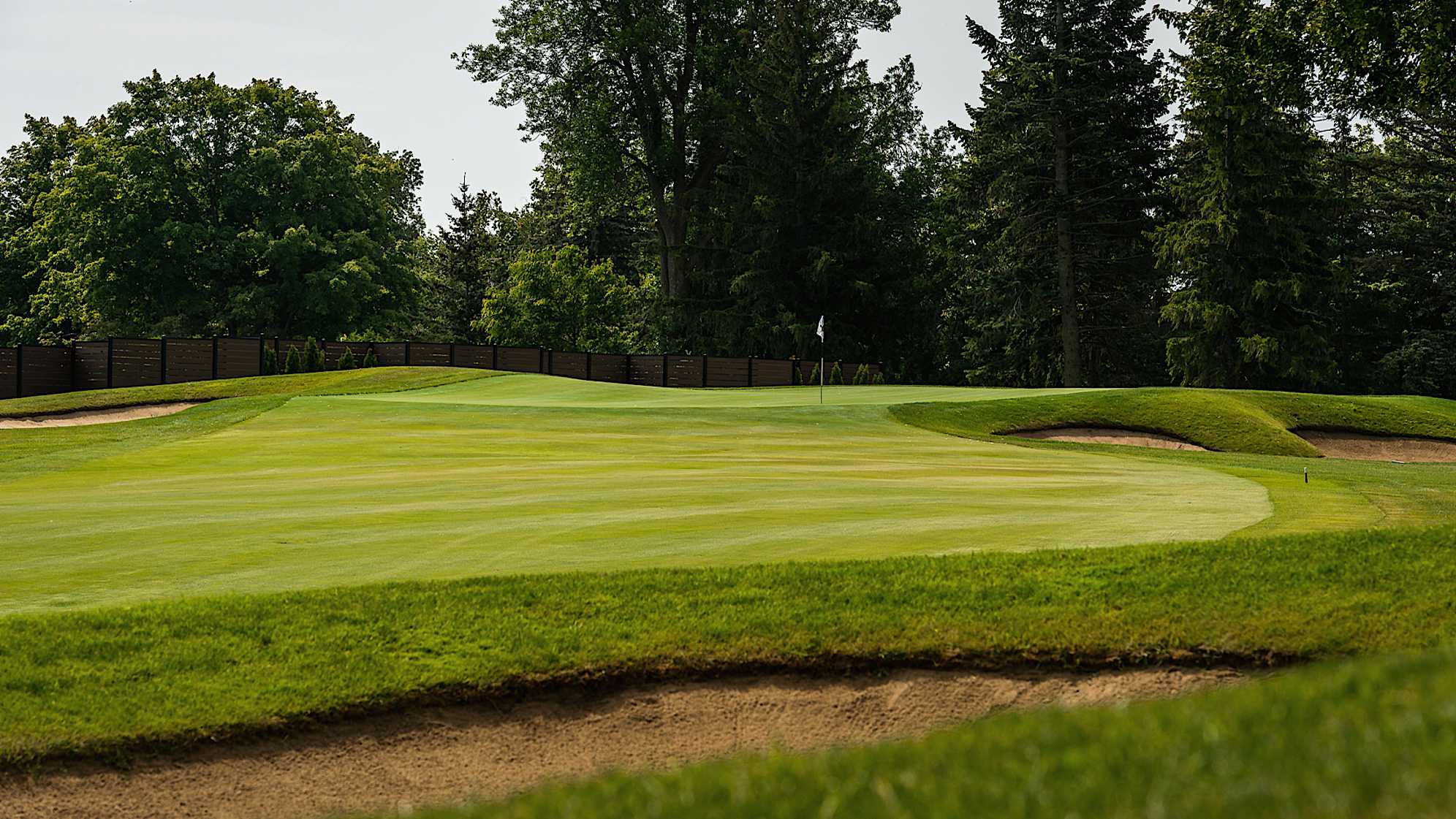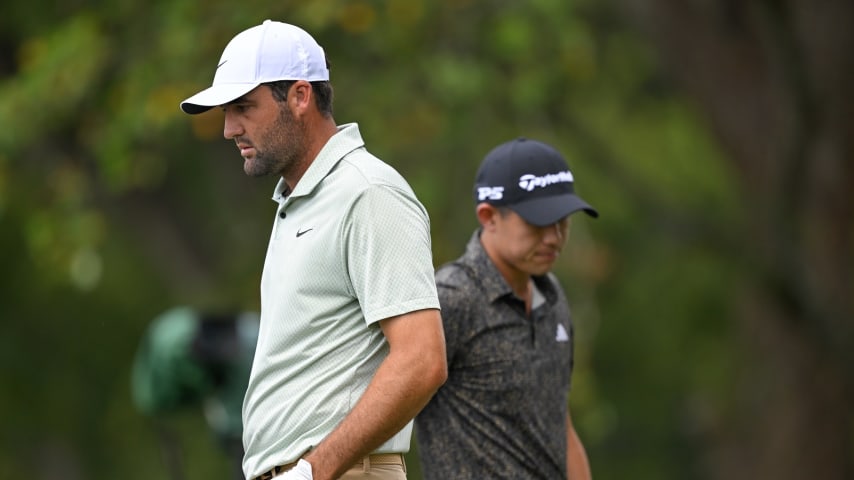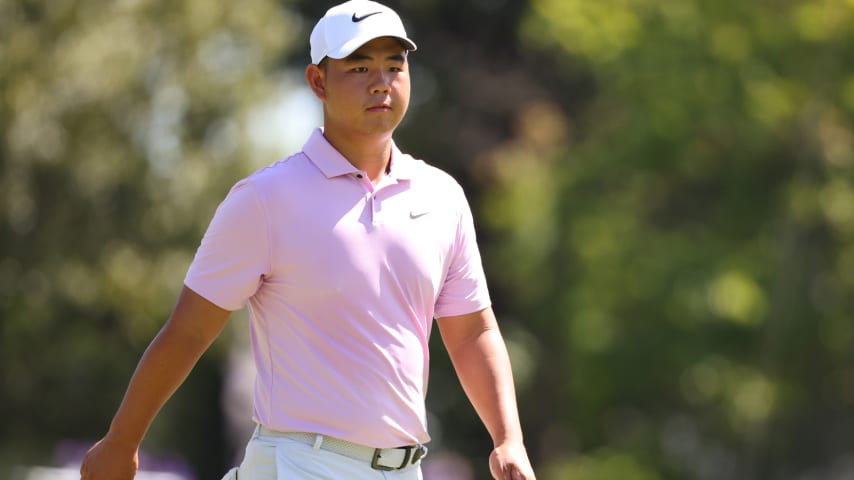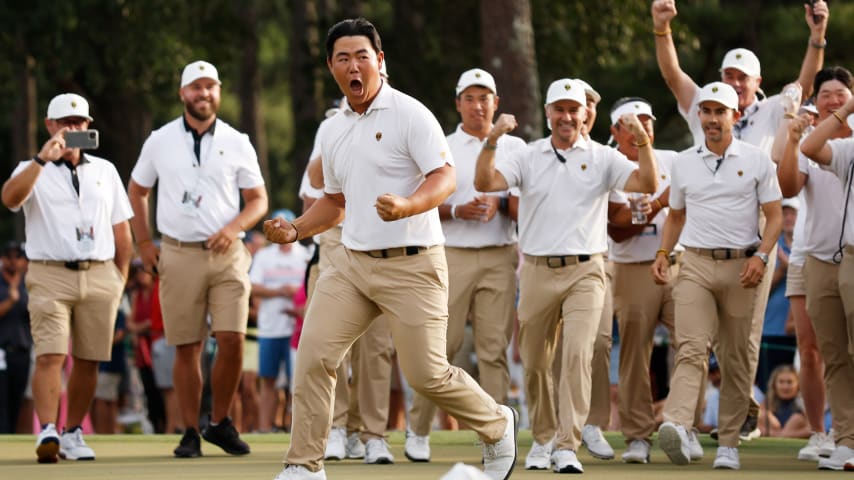Five things to know: The Royal Montreal Golf Club
9 Min Read

2024 Presidents Cup preview
Written by Bradley S. Klein
The Presidents Cup returns to The Royal Montreal Golf Club, a historic venue that will be energized by the local fans cheering on their national hero, Team Captain Mike Weir, and his 12-man International Team. With a trio of Canadians on Weir’s roster, the Internationals should surely enjoy a home-field advantage that will aid their quest for a second Presidents Cup victory.
It was here 17 years earlier that Weir defeated Tiger Woods in a Presidents Cup Singles match that is one of the highlights in Canadian golf history. Before the matches get underway, here are five things to know about Royal Montreal.
1. A long history
The Royal Montreal Golf Club lays claim to being the oldest golf club in North America. The club was founded by eight men in 1873, two years after Montreal made Mount Royal into a park and golfers started playing on its grounds. The club added the "Royal" honorific in 1884 with the permission of Queen Victoria. In 1895, Royal Montreal was one of five clubs involved in the formation of the Royal Canadian Golf Association.
The club has moved locations twice, most recently to its present site on the island of L'Île Bizard in 1959. The 45-hole club occupies the shoreline of the Lake of Two Mountains and has been home to the RBC Canadian Open 10 times, the second-most in the tournament’s history. The tournament has been played five times apiece at Royal Montreal’s Dorval site and its current L'Île Bizard site, where the Dick Wilson-designed championship Blue Course was used.
World Golf Hall of Famer Tom Weiskopf won the first RBC Canadian Open at Royal Montreal in 1975. Other winners at the Blue Course are Bob Gilder (1980), former U.S. Open winner Steve Jones (1997), Scott Verplank (2001) and former PLAYERS champion Tim Clark (2014).
Royal Montreal was subsequently renovated by Rees Jones in 2004 and then again in the run-up to this year’s President Cup by a team from PGA TOUR Design Services. The resulting course has been lengthened almost 200 yards and now will play 7,319 yards, as a par 70. It offers marginally narrower landing areas off the tee, thanks to a tightening of fairways at the 290- to 320-yard range.
2. Architect hour
Wilson and Robert Trent Jones were the most prolific course architects in the post-World War II years in the middle of the 20th century. Both designed courses that were built for the modern aerial game with deep bunkers guarding elevated greens. Wilson’s most famous courses include Royal Montreal, Bay Hill and Doral’s Blue Course.
“A golf course should look more vicious to the player than it actually is. It should inspire you, keep you alert,” Wilson said in a 1962 Sports Illustrated article. “If you’re playing over a sleepy-looking golf course, you’re naturally going to fall asleep.”
Wilson was born in 1904 in Philadelphia, where his father worked as a dirt contractor at the famed Merion Golf Club. The younger Wilson was a quarterback at the University of Vermont before joining the design firm of Howard Toomey and William Flynn. That experience allowed him to work in the field at famed courses such as Merion, The Country Club at Brookline and Shinnecock Hills.
Wilson was drafted into World War II, where he constructed and camouflaged airfields in Florida. By the 1950s, Wilson and Jones were the most sought-after architects of the era. Wilson often set his greens at angles from the fairway, and he was fond of incorporating false fronts and fall-offs at the rear and side of his greens.
“A golf course should require equal use of every aspect of the game, rather than make a disproportionate demand on one or two phases, such as driving or putting,” he said.
Wilson died in 1965 after a fall at Pine Tree Golf Club in Boynton Beach, Florida, which was considered to be his best design.
3. A walk in the park
Royal Montreal is relatively quiet in terms of terrain, with only 25 feet of elevation change across the entire layout. The front nine offers a classic parkland sensibility with heavily treed playing corridors. By contrast, the back nine presents water intruding upon the line of play on six holes, including the concluding stretch of five holes.
Wilson’s original design featured perched greens and sparse, strategic fairway bunkering. That character remains, with putting surfaces of a modest size. They have an average size of 5,000 square feet and are well protected by greenside bunkers. This is aerial golf all the way, with players who miss greens facing delicate up-and-over pitch shots to save par.
The 30 acres of fairway offer generous landing zones for everyday play, but they have been heavily defended for elite professionals with deep bunkering and rough that pinches in. As is the prerogative of the home captain, Weir has a say in the agronomy and is expected to request especially thick, 4-inch rough that will produce a penalty for missed fairways.
The past winners at Royal Montreal, including Clark and Verplank, point to a course that favors accuracy over distance. Clark ranked second in Driving Accuracy in 2014, the year he won at Royal Montreal, while Verplank ranked 13th. Steve Jones won the 1997 RBC Canadian Open at Royal Montreal a year after winning the U.S. Open at Oakland Hills.
4. Aquaman returns
Be prepared to watch lots of video replay of one of modern professional golf’s most uproarious moments. It occurred on the 14th hole of U.S. Team member Woody Austin’s Four-ball match on the second day of the 2007 Presidents Cup.
Austin tumbled into the lake after unsuccessfully trying to dislodge his ball from the bank that borders the left side of the drivable par-4 14th. It was a light-hearted moment that Austin and his teammates could only laugh at.
“You don’t ever want to concede the hole without really playing the hole,” Austin said. “We just felt if there was any minor miracle that I could get it to the bank, then I might be able to chip it in. What I didn’t know is there were rocks in there, and I hammered a rock with the club so I didn’t even have a chance to get to the ball. Then I stepped on another one when I lost my balance, and I was done.”
He recovered to birdie three of the final four holes to earn an important half point in the final match on a day that the International Team dominated. The U.S. Team won just 1 ½ of 6 points available in that Friday session.
“I hope I proved today that I’m never going to give up,” Austin said.
The hilarity continued when Austin donned a pair of goggles upon returning to the 14th hole for his Sunday Singles match.
Austin’s career was a testament to perseverance. He was 31 years old when he won his first PGA TOUR title en route to being named the PGA TOUR’s Rookie of the Year in 1995. He had to wait nine years for his next PGA TOUR win, though. Three of his four PGA TOUR victories came in his 40s, including the 2007 FedEx St. Jude Classic. That victory, along with a runner-up to Woods in the 2007 PGA Championship, helped Austin make his Presidents Cup debut at age 43. It was his lone appearance in either the Presidents or Ryder Cup. He won his final PGA TOUR title in 2013, claiming the Sanderson Farms Championship at the age of 49.
5. Finishing touch
Even though the International Team lost the 2007 Presidents Cup by five points, the Sunday Singles provided a memorable highlight for that team and the host country. Mike Weir beat Tiger Woods, 1-up, in their match, and most of the day’s 30,000 spectators were gathered around the 18th green when Weir closed it out.
This year, the already demanding 18th hole will play 20 yards longer than it did in 2007. The fairway just past a bunker on the right has been narrowed down to 25 yards across – with water looming the entire left side. The challenge isn’t over after the tee shot. The green is considered the most challenging on the course. The putting surface features a small and relatively flat back plateau, while the front of the green is steeply sloped. It’s sure to provide a theatrical finishing stage to a premier event in the world of golf.
Pitting Weir, the greatest male Canadian golfer of all time, against arguably the best to ever play the game was all but inevitable when the captains sat down Saturday night to set the next day’s Singles matches. The International Team’s leadership, says Trevor Immelman, thought it was “the right thing to do,” and Weir didn’t shy away from taking on Woods, then the No. 1 player in the world.
“It was a pretty short discussion,” said Immelman, who was a member of that 2007 International Team and the 2022 International Team captain. He will be a captain’s assistant this year. “There was a huge buzz around the course … with the Canadian guy taking on the best player in the world.”
Prior to the 2007 matches, Weir had been in a bit of funk. He was the lowest-ranked player picked for the International Team, but with the Presidents Cup being in Canada for the first time, it made all the sense in the world to have him on the roster.
Weir had, of course, won the Masters just four years prior and reached No. 3 in the world. He was named the Canadian Male Athlete of the Year, among many honors he earned in his home country that year. He hadn’t, however, won on the PGA TOUR since The Genesis Invitational in 2004, though.
Weir and Woods went out in Sunday’s fourth match.
Although the International Team would go on to lose, 19.5-14.5, the squad won the Sunday Singles portion of the matches 7-5, highlighted by Weir’s triumph over Woods, which went the distance.
“For all the pressure that he had all week, it was pretty phenomenal how he played,” said Woods that Sunday. “I mean, not a lot of people could actually have dealt with the things he had to deal with all week. And the way he came out and represented all of Canada was impressive.”
Woods, whose seven wins that year included the PGA Championship, struggled early, missing a short putt on the opening hole before hitting his tee ball on No. 6 out of bounds. Weir didn’t cruise to victory, however. Woods was 3-down at one point but rattled off birdies on four of five holes after making the turn and was 1-up late. The Canadian tied the match on No. 17 with a 10-foot birdie. Woods hit his ball in the water on the closing hole and made bogey, conceding Weir’s tap-in par and the match.










